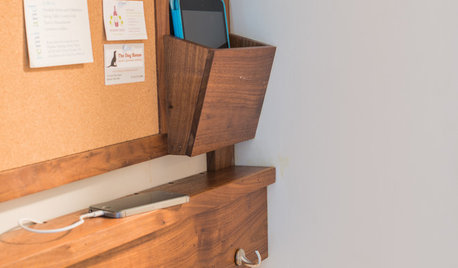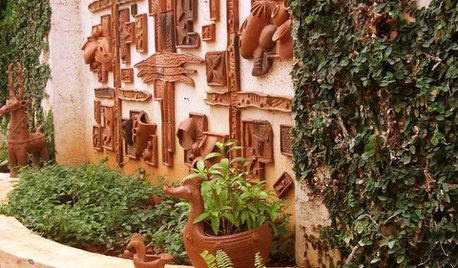Severe Yellowing and Leaves Dropping - Please Help!
adam79
15 years ago
Related Stories

DECLUTTERINGDownsizing Help: Choosing What Furniture to Leave Behind
What to take, what to buy, how to make your favorite furniture fit ... get some answers from a homeowner who scaled way down
Full Story
GARDENING GUIDESGreat Design Plant: Snowberry Pleases Year-Round
Bright spring foliage, pretty summer flowers, white berries in winter ... Symphoricarpos albus is a sight to behold in every season
Full Story
SUMMER GARDENINGHouzz Call: Please Show Us Your Summer Garden!
Share pictures of your home and yard this summer — we’d love to feature them in an upcoming story
Full Story
GARDENING GUIDESGreat Design Plant: Silphium Perfoliatum Pleases Wildlife
Cup plant provides structure, cover, food and water to help attract and sustain wildlife in the eastern North American garden
Full Story
HOME OFFICESQuiet, Please! How to Cut Noise Pollution at Home
Leaf blowers, trucks or noisy neighbors driving you berserk? These sound-reduction strategies can help you hush things up
Full Story
THE HARDWORKING HOMEA New Drop Zone Keeps the Clutter at Bay
The Hardworking Home: A clever wall-mounted station for keys, phones and more helps a family stay organized
Full Story
DECORATING GUIDESSlow Design: Today's 'Wabi-Sabi' Helps Us Savor the Moment
Learn about the design movement that's aiming to satisfy our real needs, leaving materialism in the past
Full Story
DECLUTTERINGDownsizing Help: How to Get Rid of Your Extra Stuff
Sell, consign, donate? We walk you through the options so you can sail through scaling down
Full Story
SELLING YOUR HOUSE10 Tricks to Help Your Bathroom Sell Your House
As with the kitchen, the bathroom is always a high priority for home buyers. Here’s how to showcase your bathroom so it looks its best
Full Story






rhodyman
luis_pr
Related Professionals
New Bedford Landscape Architects & Landscape Designers · Beavercreek Landscape Architects & Landscape Designers · Ilchester Landscape Architects & Landscape Designers · Leawood Landscape Architects & Landscape Designers · Norton Shores Landscape Architects & Landscape Designers · Alamo Landscape Contractors · Apollo Beach Landscape Contractors · Fuquay-Varina Landscape Contractors · Gallatin Landscape Contractors · Kailua Landscape Contractors · Kearny Landscape Contractors · Melrose Park Landscape Contractors · Pompano Beach Landscape Contractors · Secaucus Landscape Contractors · West Allis Landscape ContractorsLindaMA
luis_pr
amysrq
morz8 - Washington Coast
loreleie
rhodyman